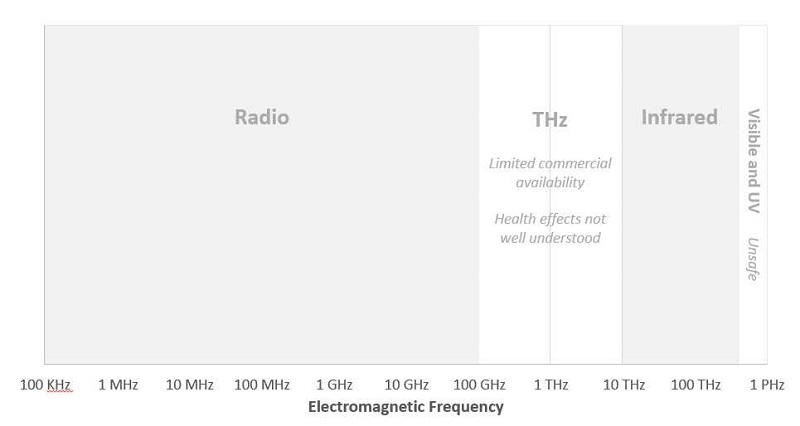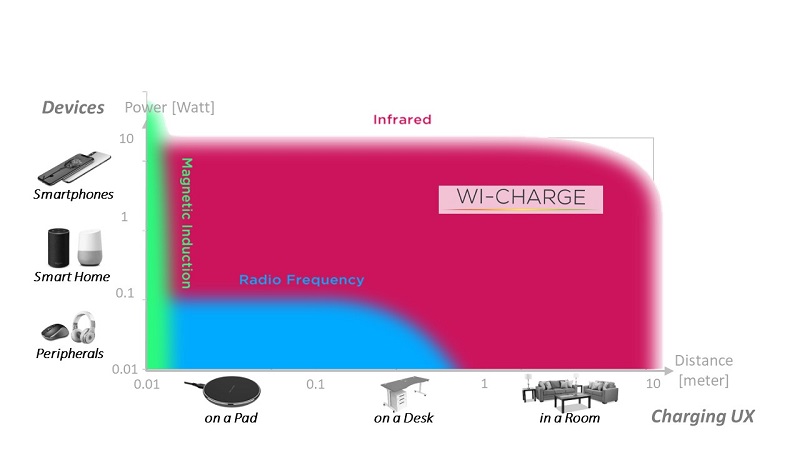By Ori Mor, VP research and development, Wi-Charge
The promise of wireless power, or wireless energy transfer, is certainly not new. Famously, Nikola Tesla experimented with long-range wireless energy transfer, but his most ambitious attempt — the Wardenclyffe Tower — failed when he ran out of money. Since then, scientists and engineers have made great strides in advancing the technology, but many feel that the technology still falls short of its lofty expectations.
The reality of wireless power is that we are not as far away as some might think. Rather, it’s a matter of understanding the currently available technology and matching that technology with appropriate use cases.
Our wireless world
Wireless power technologies deliver electricity to charge and power devices without being plugged in. For example, a smart speaker could be placed anywhere in the home without routing ugly cords. Currently, most “wireless” objects rely on batteries that eventually need to be charged or replaced.
These battery-operated devices often trade performance and functionality for battery life. A battery-operated security camera might be able to stream just one minute of video per day. With wireless power, that limitation is removed.
So which devices can be powered without wires? That depends. Different devices have different power needs. Don’t expect to disconnect your refrigerator or TV from the power outlet any time soon. But if you want to charge a phone across the room and have wire-free surround speakers, smart home devices, or game controllers, the right wireless power technology can make this a reality.
Two sides of the spectrum
To better understand our options for wireless power, we need to look at the entire electromagnetic (EM) frequency spectrum. The EM frequency bands are shown in Fig. 1 below.

Fig. 1: The electromagnetic spectrum
Of primary interest are the commercially developed bands of radio and infrared (IR). Between them — at the range of 100 GHz to 10 THz — is a technological chasm called the “THz gap,” where little is available in terms of commercial components. Little is also known about the health effects of that “THz gap” band.
Visible light and ultraviolet light aren’t great candidates for wireless power due to inherent user experience and safety challenges. Thus, when we look at the EM spectrum, we are essentially comparing the RF and IR bands, which are on two sides of the EM spectrum.
The power play
How much power do you need and how much can you deliver? Power is measured in watts (W). Obviously, different devices will require different amounts of power to operate or charge. Included below are typical power consumption values for several devices.

Understanding that different devices have different needs is an important first step in determining which devices are better suited for wireless power as it exists today. But that’s just the first part of the question. We also need to look at how much power can be delivered. To do that, we need to look at the main factors that limit energy delivery: distance (limited by diffraction) and power (limited by safety).
Diffraction: Imagine someone trying to get a drink from a garden hose. The water is “transmitted” from the garden hose and “received” by the person’s mouth. The water stream coming out of the garden hose has a small diameter. The farther away the person is from the garden hose, the wider the diameter of the water stream, meaning that a smaller percentage of the available water will be captured as they move farther away from the hose. More water will be “wasted” or will drench other people or objects.
In a similar fashion, when a power beam “diverges” (becomes wider), the distance of the transmitter from the receiver impacts the power-capture ability. If only a small portion of transmitted energy is captured by the receiver, much more energy needs to be sent from the transmitter to power the device.
One option to improve efficiency would be to increase the receiver size, but creating a larger receiver makes the technology less practical for phones or other portable devices.
Safety: If only a small portion of transmitted energy is captured, then the rest of the power is radiated into the environment. Power not captured by the receiver would expose people, animals, and objects to collateral radiation. Depending on the amount and type of energy, this could be unsafe.
Finding the right technology
If you asked a group of engineers to come up with a solution for long-range wireless power, radio frequency (RF) would likely be a natural choice. There are many commoditized components available for RF, and there is a lot of RF engineering talent. It seems logical that if RF does so well in communications, it may also do well with wireless power.
Unfortunately, it turns out that the very properties that make RF so well-adapted to communication cripple it when it comes to wireless power delivery. When you try to pack RF into a tight beam and send it over to some distant point, it tends to disintegrate very quickly. In fact, it turns out that delivering RF beams over distances beyond 1 m is nearly impossible. We’re talking about practical implementations for electronic devices, not huge antennas and radio-telescope dishes.
Similarly, when you crank up the power level, you discover that going beyond 0.1 W or so violates the applicable safety standards for radio. Eventually, you end up with a modest envelope of potential performance (much greater than magnetic induction), but again, you are limited by reach and the power level that you can support.
RF may be able to marginally support some smart home applications. For example, it can support peripherals like wireless mice or keyboards in a desktop environment — applications that don’t require anything beyond 1 m. But achieving meaningful support of the vast majority of smart home applications and personal mobile devices remains outside of the realm of RF technology.
It turns out that if you look for a technology that can power both mobile devices and smart devices anywhere in the room at distances of 10 m and power levels of up to 10 W, IR is a good choice because it has two magnificent properties that make it well-suited for delivering wireless power.
First, you can pack a very tight beam of infrared power and carry it over long distances. Think of a laser pointer that can emit a focused beam of light over a long distance without disintegrating. With IR, we have the capability to cover long distances without losing shape or disintegrating and still deliver all of the power to the client device.
The second property of IR, which is even more attractive, relates to safety. RF is man-made radiation that was basically invented about 100 to 150 years ago. RF can be quite harmful to all forms of life, which is why safety limits kick in at such an early point. IR, on the other hand, has always been around — it makes up about half of the solar energy heating the earth. When life on Earth developed, it developed bathing in IR. The result is that we are much more adapted to IR and that IR exhibits roughly 100× more relaxed safety limits than radio.
If you combine the physical phenomena of dispersion and the safety limits, you get the following performance envelope for the available technologies:

Fig. 2: Power options
We plotted this in the context of the customer experience (charging on a pad, on a desk, in a room, and beyond) and power levels required for peripherals, smart home devices, and smartphones.
Conclusion
Although we may still be a few years away from powering large appliances like laptops via wireless power, the combination of efficiency and safety show that IR can deliver 100× the energy of best-case RF technologies. In other words, IR technology can deliver sufficient power to charge most modern mobile phones.
Advertisement





